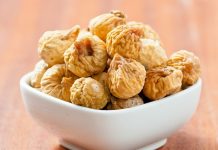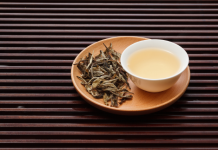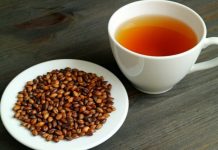Health Benefits of Lentils for Babies is a series of articles about various lentils and legumes that can be given to babies. There are several lentils or legumes available today, which can be introduced to infants and toddlers. Some of them include red lentils, brown lentils. We would be discussing the health benefits of mung beans for babies.
The health benefits of mung bean or mung dal for babies include good source of vitamins, minerals, and protein, it is easy to digest, protects and heals liver and is a good immune system stimulant.

Mung bean is also known as green gram or golden gram. The word mung bean or moong bean comes from the Hindi word Mung. A split and polished version of mung bean is very popular in Asia, particularly in India. You can find that unpolished mung bean is green in color and polished and split mung bean is yellow in color. The yellow colored lentil is given to children, old people and sick people because it is easy to digest and nutritious.
Mung bean is believed to have originated in the Indian sub-continent including India, Pakistan and Bangladesh. Apart from the Indian sub-contitent, mung bean is also consumed in China, Sri Lanka, Thailand, Philippines, Indonesia, Burma, Bangladesh, Cambodia, Laos, the Mediterranean and in southern United States as well.
Yellow Mung bean as many lentils or legumes is a good source of protein, vitamins and minerals and also they do not contain any fats, thus making them an ideal food for children and the elderly. It is also very easy to digest
Nutrition in Mung bean
The nutrition found in Mung bean, according to the National Nutrient Database from the United States Department of Agriculture include
| Nutrition | Value per 100 g | Nutrition | Value per 100 g |
| Water | 9.05 g | Energy | 347 kcal |
| Protein | 23.86 g | Total Lipid (fat) | 1.15 g |
| Carbohydrates | 62.62 g | Fiber | 16.3 g |
| Sugars | 6.60 g | Calcium | 132 mg |
| Iron | 6.74 mg | Magnesium | 189 mg |
| Phosphorous | 367 mg | Potassium | 1246 mg |
| Sodium | 15 mg | Zinc | 2.68 mg |
| Vitamin C | 4.8 mg | Thiamin | 0.621 mg |
| Riboflavin | 0.233 mg | Niacin | 2.251 mg |
| Vitamin B-6 | 0.382 mg | Folate | 625 ug |
| Vitamin A | 114 IU | Vitamin E | 0.51 mg |
| Vitamin K | 9 ug |
Is mung bean safe for my baby?
Yes, mung bean is a safe food for your baby with no food allergies. In fact, it is one of the best foods that you can think of for your child. It is a good source of protein, vitamins and minerals. But, one thing must remember while giving mung bean is that green mung bean should be avoided for infants and toddlers because it can be difficult for them to digest the outer layers of fiber. Instead give them polished yellow mung bean, as it would be easy for them to digest. As their digestive system strengthens over the coming months, you can start giving them unpolished mung bean. It is better to avoid green mung bean until your child is at least 4-5 years old. But initially, give only yellow mung bean. Also the prescribed age to begin mung bean is 6 months. After you have started feeding solid foods, include boiled yellow mung bean along with a cereal, usually rice.
Health benefits of mung bean
Here are some of the health benefits of mung bean.
Good source of vitamins and minerals: Mung gram is a very good source of vitamins and minerals. Vitamins such as vitamin C, A, K, E, B-6, thiamin, riboflavin, niacin, folate, etc are found in considerable quantities in mung gram. Apart from vitamins, minerals such as calcium, iron, magnesium, potassium, phosphorous, zinc and sodium can also be found in high quantities. The presence of vitamins and minerals is what makes mung gram a great choice of food for babies. During the initial months and years, these vitamins and minerals play a major role in the physical as well as mental development of your baby.
Good source of protein: Apart from being a great source of vitamins and minerals, mung gram is also a great source of protein. According to the nutrition table from the United States Department of Agriculture, about 23 g of protein is present in 100 g of mung gram. This is a very high amount which is comparable with eggs, fish and chicken. The presence of protein facilitates quicker development of muscle and organs in infants. Unlike eggs, fish and chicken where the chances of having allergic reactions are high in babies, mung gram turns out to be a safer alternative as good source of protein.
Easy to digest: Mung gram is easy to digest. This is the reason why in traditionally in India, infants, elder people and sick people are given a mixture of boiled yellow mung gram and rice called khichdi. This preparation is very beneficial when the digestive system is still not matured enough or when it has weakened due to age or due to sickness. As infants and toddlers cannot digest food that we adults can, the ideal way to feed them is by giving them a food that digests easily. (Bakhru, Foods That Heal).
Protects and heals liver: According to one scientific study on legumes, it has been noted that traditionally mung beans were used to heal problems related to liver. Studies about the effects of mung bean on liver tissues showed that mung bean has a great potential in liver protection and healing. (Norlaily Mohd Ali, et al, 2013).
Stimulates the immune system: Studies have shown that mung bean or mung gram is a good stimulant of the immune system. This means that the production and activeness of white blood cells and the antibodies improve. Thus, infections causing bacteria, viruses, yeast, fungus, etc will be eliminated and the overall health of your baby is not disturbed. (Battu G, et al, 2011).
Measures to be taken while feeding mung bean to your baby
Selecting mung beans: These days you can find mung beans in any super market. Preferably select yellow mung beans. Yellow mung beans are especially good for infants and toddlers because they are easy to digest. On the other hand, green mung beans are comparatively hard for babies to digest. So, until your baby’s digestive strength improves, it is better to feed yellow mung bean.
So, what’s the difference between yellow mung bean and green mung bean? Green mung beans are the unpolished beans and yellow mung beans are the polished ones. The outer layers are removed during the milling process similar to rice milling process. The husk adds to the fiber content of mung beans and make it difficult for a baby or a elderly person to digest.
How to cook mung beans? The process of cooking yellow mung beans is similar to that of any other lentil. If cooking in an electric cooker, for a single measure of mung beans add twice the amount of water and cook. Mung beans absorb a lot of water and turn almost into a paste.
How to feed boiled mung beans: The best way to feed mung bean paste is by adding it to rice. The proportion can range between 1/3rd and 1/4th of rice or any cereal. Also make sure that the cereal is also pureed. This makes it an easy feed and easy to digest. You could also add various cooked herbs or leafy vegetables to the mung bean paste for a wholesome diet.












